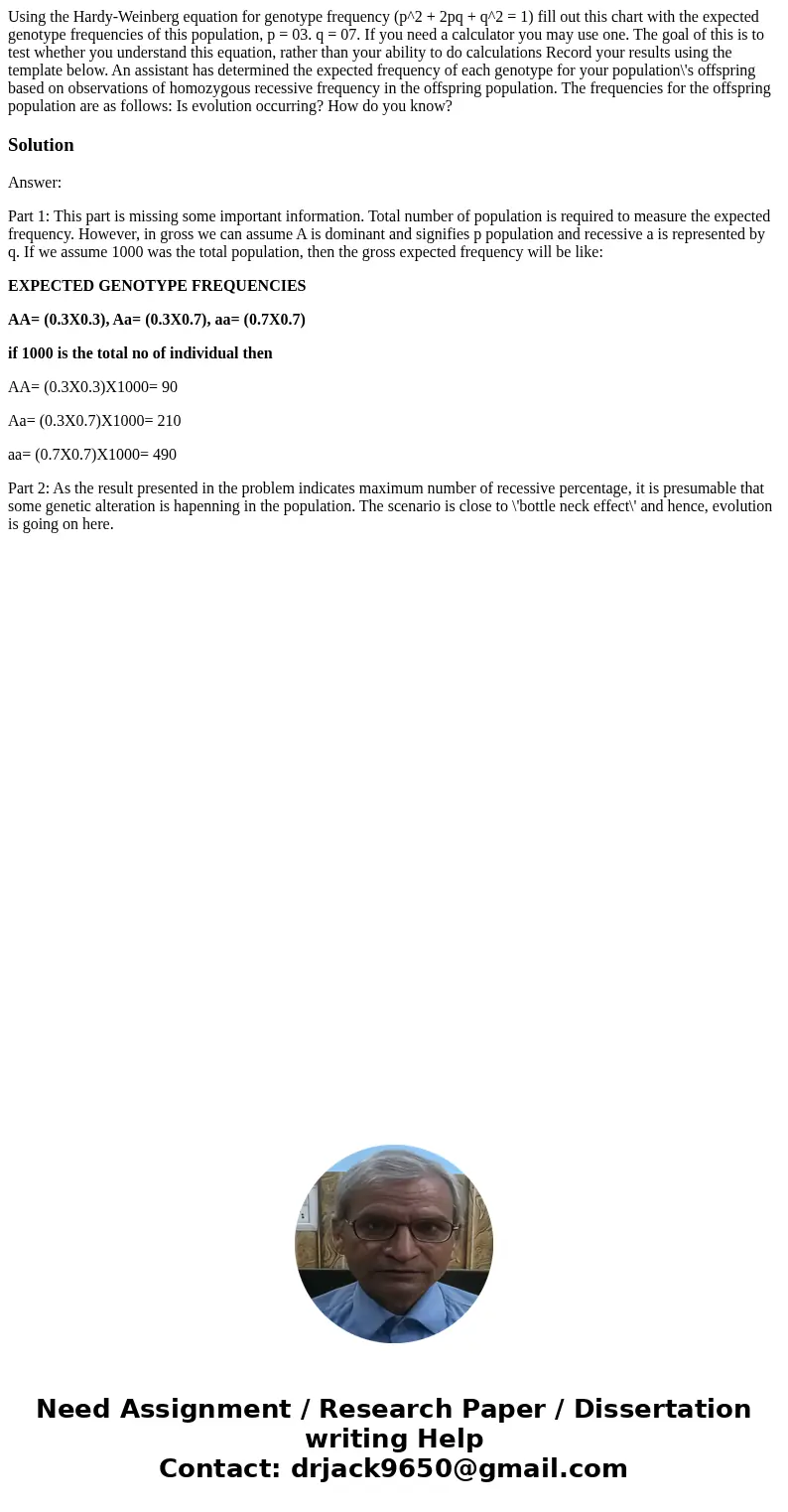Using the HardyWeinberg equation for genotype frequency p2
Solution
Answer:
Part 1: This part is missing some important information. Total number of population is required to measure the expected frequency. However, in gross we can assume A is dominant and signifies p population and recessive a is represented by q. If we assume 1000 was the total population, then the gross expected frequency will be like:
EXPECTED GENOTYPE FREQUENCIES
AA= (0.3X0.3), Aa= (0.3X0.7), aa= (0.7X0.7)
if 1000 is the total no of individual then
AA= (0.3X0.3)X1000= 90
Aa= (0.3X0.7)X1000= 210
aa= (0.7X0.7)X1000= 490
Part 2: As the result presented in the problem indicates maximum number of recessive percentage, it is presumable that some genetic alteration is hapenning in the population. The scenario is close to \'bottle neck effect\' and hence, evolution is going on here.

 Homework Sourse
Homework Sourse